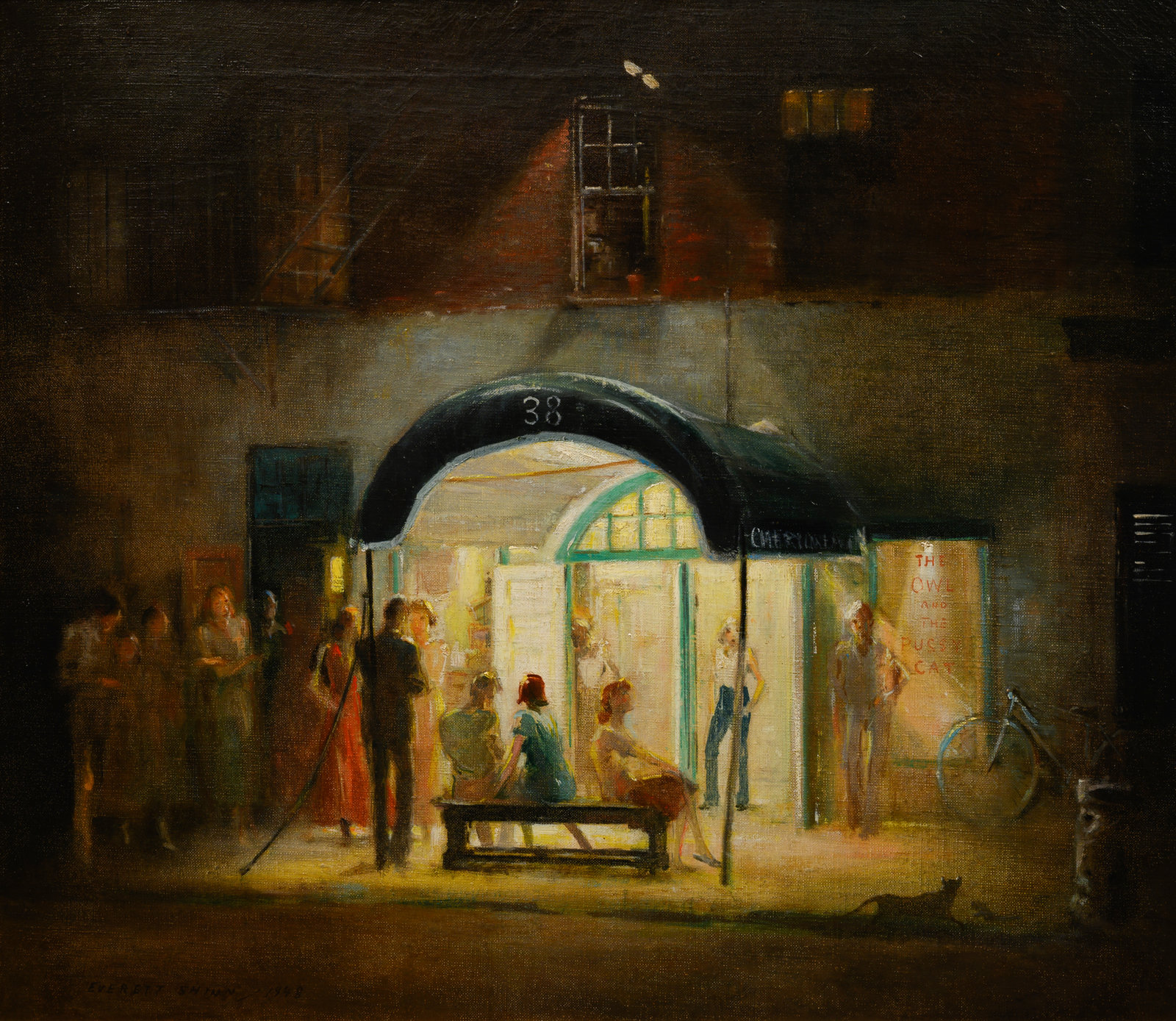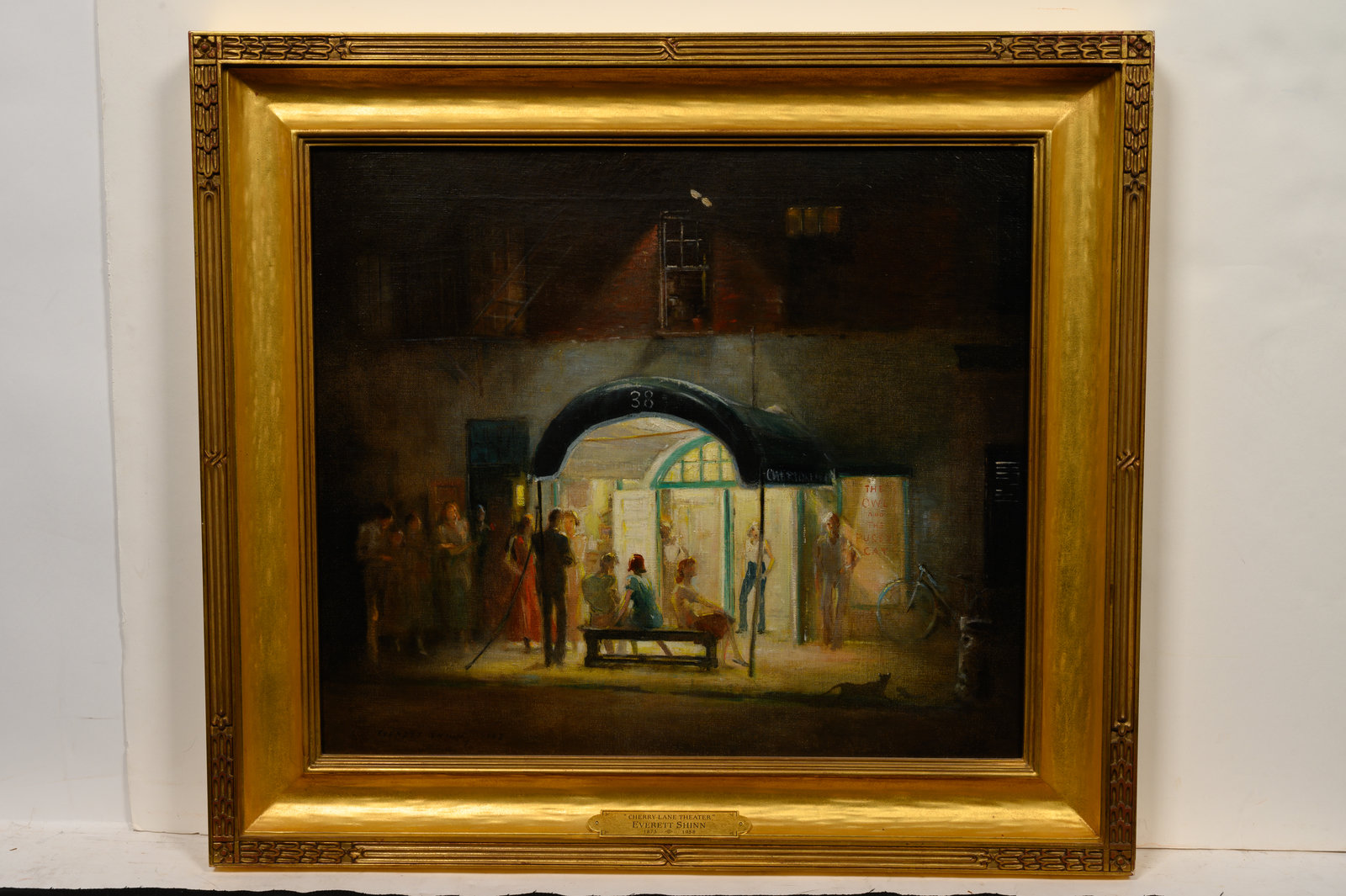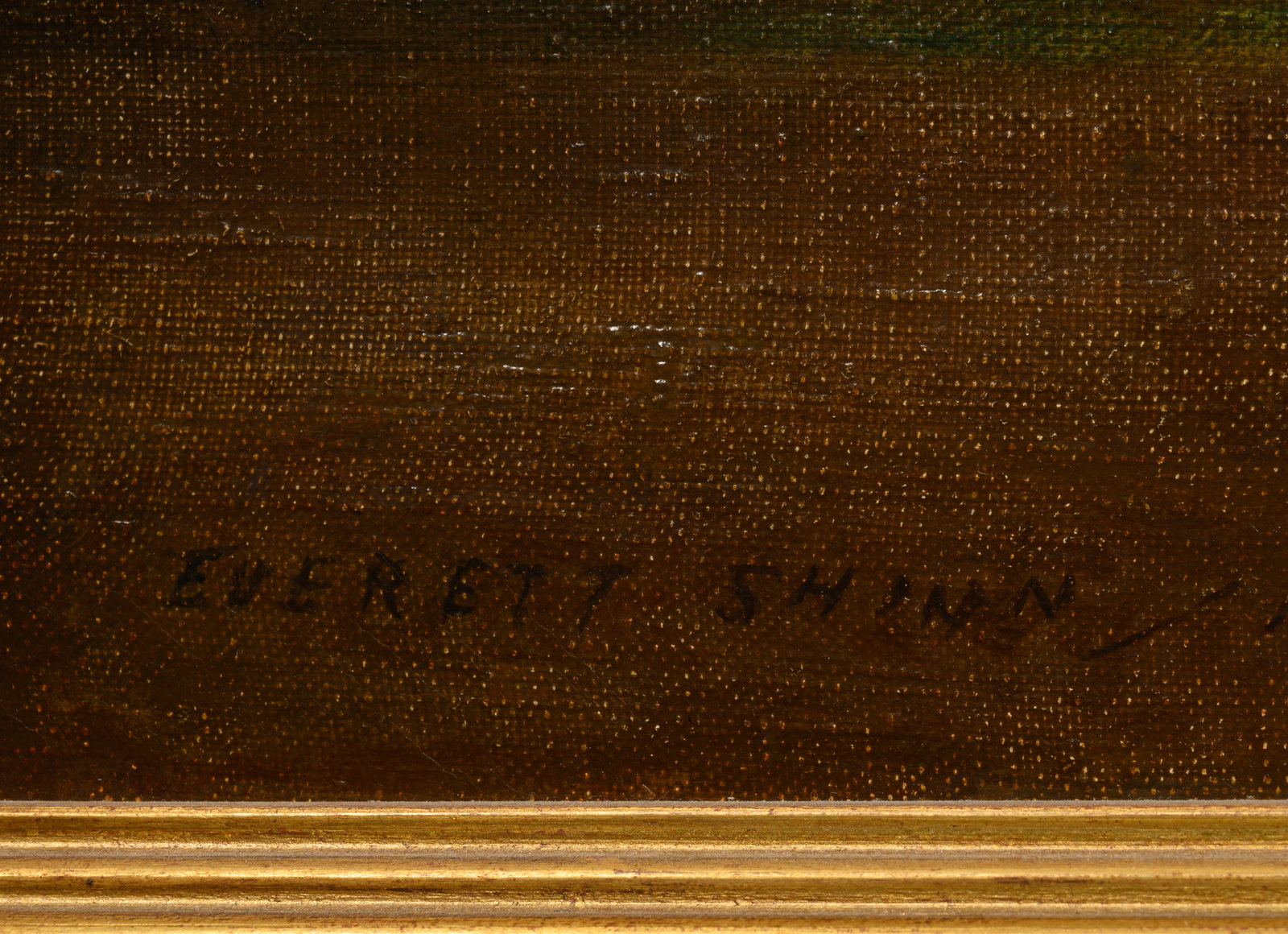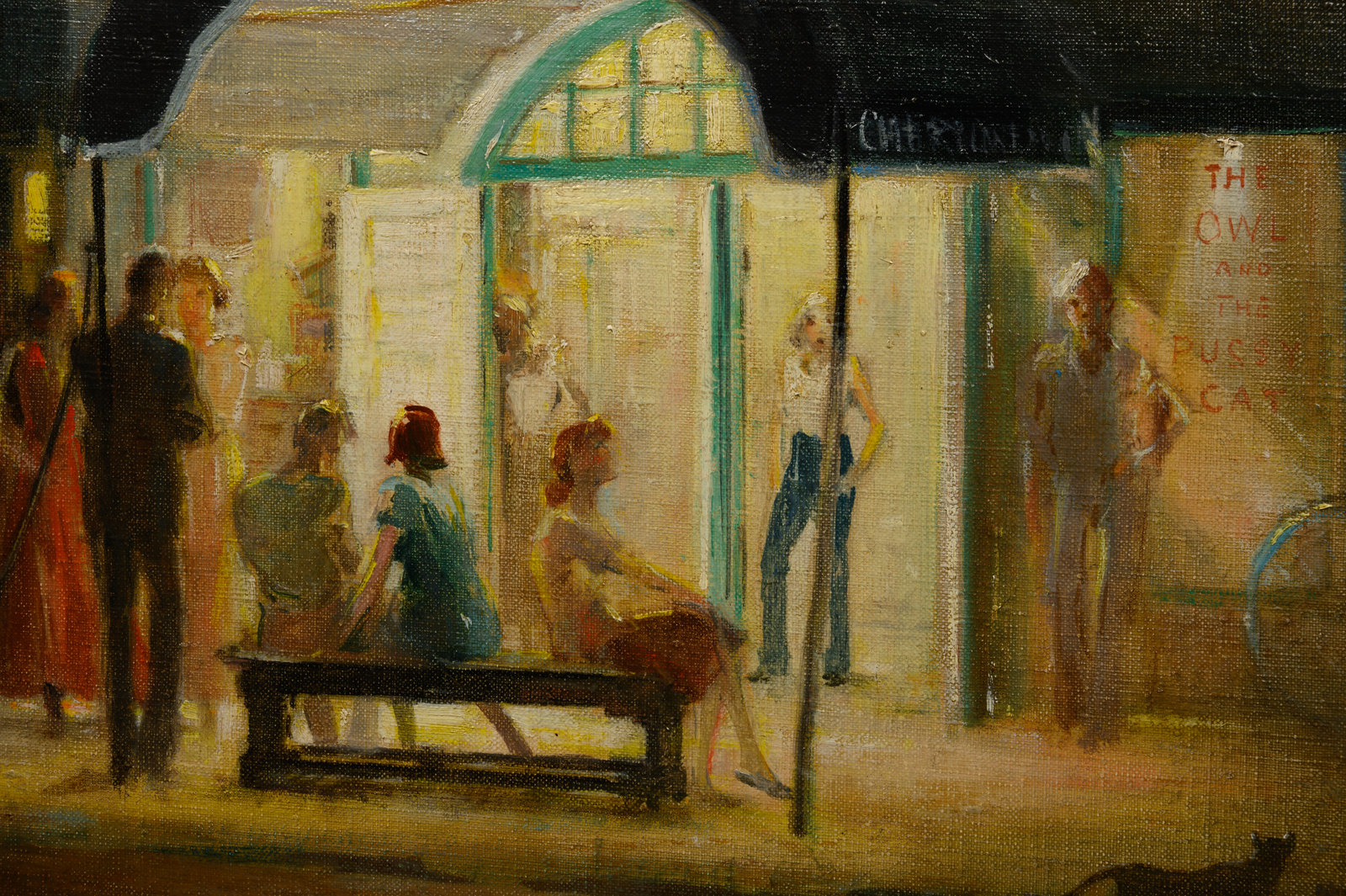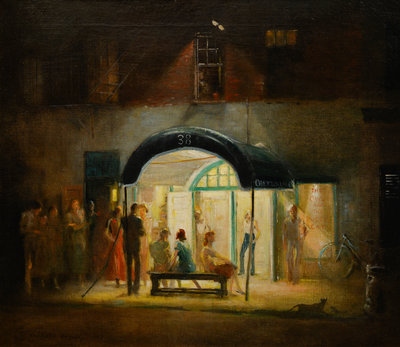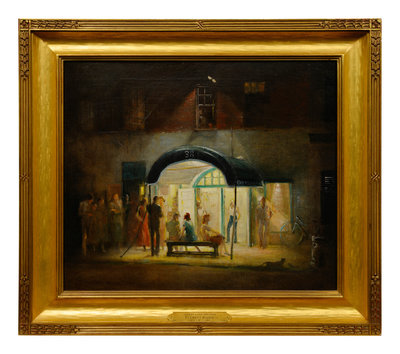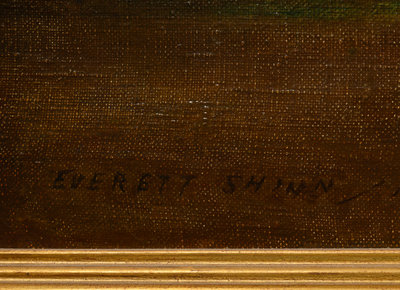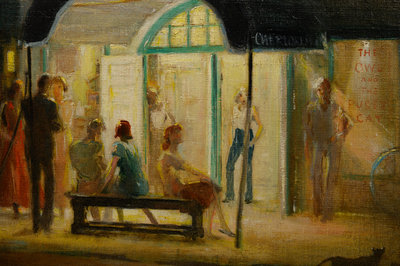Everett Shinn
(American, 1876-1953)
Cherry Lane Theater
, 1948
Sale 869 - American & European Art
May 3, 2021
10:00AM CT
Live / Chicago
Estimate
$50,000 -
$70,000
Sold for $62,500
Sold prices are inclusive of Buyer’s Premium
Lot Description
Everett Shinn
(American, 1876-1953)
Cherry Lane Theater
, 1948oil on canvas
signed Everett Shinn and dated (lower left)
19 x 22 inches.
Property from the Collection of Noel and Kathryn Dickinson Wadsworth, Atlanta, Georgia
Provenance:
Kraushaar Galleries, New York
Private Collection, Philadelphia, Pennsylvania, 1961
By descent through the family
Sold: Christie's, New York, May 21, 2003, Lot 69
David Findlay Jr., Inc, New York
Acquired directly from the above by the present owners
Lot essay:
Cherry Lane Theater, with its welcoming glow and crowd of people, documents a slice of New York theater life in the late 1940s. Still in existence in Greenwich Village, the Cherry Lane Theatre has long been a home for nontraditional and experimental works. Originally the site of a silo on the Gomez farm in 1817, the building that now stands at 38 Commerce Street was first erected as a brewery in 1836 and later served as a tobacco warehouse and box factory. In 1923, theater artists Evelyn Vaughn, William S. Rainey, Reginald Travers, and Edna St. Vincent Millay converted the structure into a theater they named the Cherry Lane Playhouse. The famed scenic designer and architect Cleon Throckmorton was commissioned to do the alterations. The theater fueled some of the most ground-breaking experiments of the American stage, including the Downtown Theater movement, The Living Theatre, and Theatre of the Absurd, which all took root at the Playhouse.
Interest and involvement in theatrical activities permeated the life of Everett Shinn from his youth when his obsession with the circus led him to learn acrobatics and he later honed his illustration skills by creating poster for the local opera house. As a maturing artist, Shinn became a member of “The Eight,” with Robert Henri as mentor and proponent of the true representation of gritty, urban life. A trip to Europe in 1900 exposed the young artist to the dynamic and vibrant work of Édouard Manet and Edgar Degas, which further fueled his interest in the depiction of the theater. Shinn’s devotion to performance was not limited to his painting practice. He wrote plays that he produced in his New York home on Irving Place; served as an art director in Hollywood; produced public murals; and worked as an illustrator and interior designer.
The present artwork reveals Shinn’s facility as both an illustrator and creator of tightly composed scenes. Viewed from across the street, the milling crowd outside the theater is sketchily but deftly described. A solitary woman sits and smokes next to a couple on a bench; a man in tuxedo and woman wearing an evening gown converse; a crowd of curious onlookers wait outside the shadows. The warm lights from the building spill out onto the sidewalk and envelopes the figures nearest in a convivial glow. The scene perhaps depicts intermission, capturing both the anticipation and tedium of the break in action. Unnoticed by the theatergoers, the dark shadow of a cat darts to the right but appears to look at the crowd as it runs by. Here, Shinn portrays the audience in the painting as actors themselves in an unknown play, for which the outside viewer can imagine the dramas and comedies within.
Condition Report
The physical condition of lots in our auctions can vary due to
age, normal wear and tear, previous damage, and
restoration/repair. All lots are sold "AS IS," in the condition
they are in at the time of the auction, and we and the seller make
no representation or warranty and assume no liability of any kind
as to a lot's condition. Any reference to condition in a catalogue
description or a condition report shall not amount to a full
accounting of condition. Condition reports prepared by Hindman
staff are provided as a convenience and may be requested from the
Department prior to bidding.
The absence of a posted condition report on the Hindman website or
in our catalogues should not be interpreted as commentary on an
item's condition. Prospective buyers are responsible for
inspecting a lot or sending their agent or conservator to inspect
the lot on their behalf, and for ensuring that they have
requested, received and understood any condition report provided
by Hindman.
Please email conditionreports@hindmanauctions.com for any additional information or questions you may have regarding this lot.
